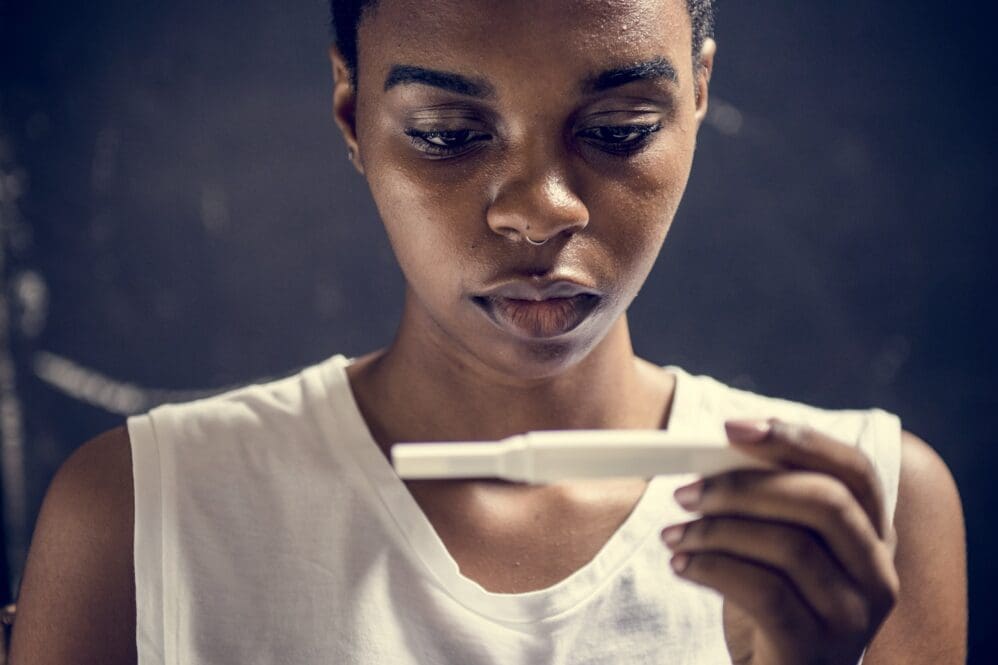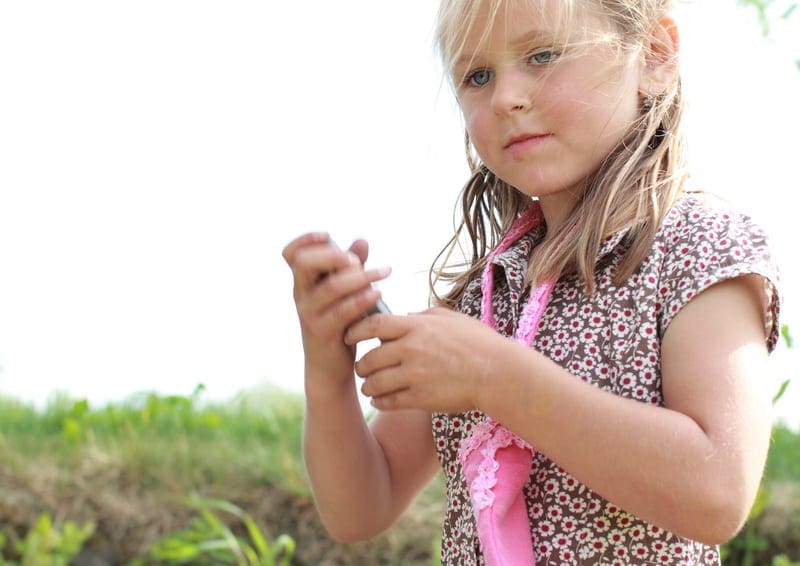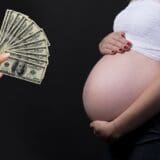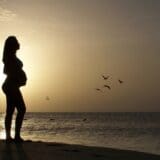One of the most exciting things that can happen in a person’s life is finding out that they are going to become a parent. The nine-month journey of pregnancy is an amazingprocess during which a baby grows and develops inside their mother’s womb. While each pregnancy is unique, there are general stages that all expectant mothers go through. Here is a beginner’s guide to the different stages of pregnancy. The first stage of pregnancy is the implantation stage. This is when the fertilized egg attaches to the wall of the uterus. For most women, this happens about six days after ovulation. Implantation is followed by the earliest stage of pregnancy, which is called the embryonic stage. This is when the baby’s major organs and systems start to develop. The second stage of pregnancy is the fetal stage. This is when the baby starts to grow and develop more rapidly. The baby’s bones and muscles begin to form, and they will start to move around inside the womb. This is also the stage when many women begin to feel the baby move. Finally, the third stage of pregnancy is the perinatal stage. This is the stage from childbirth
1. Many people don’t know that there are different stages of pregnancy. 2. The different stages of pregnancy are: – The first stage is called the embryonic stage. – The second stage is called the fetal stage. – The third stage is called the neonatal stage. 3. Each stage has different characteristics. 4. The embryonic stage is the earliest stage of pregnancy and lasts for about the first eight weeks. 5. The fetal stage is from week nine to week thirty-six, and is when the baby grows the most. 6. The neonatal stage is from birth to four weeks old. 7. After the neonatal stage, the baby is considered an infant.
1. Many people don’t know that there are different stages of pregnancy.
Most people are only familiar with the three trimesters of pregnancy, but there is actually a fourth stage that begins before conception even takes place. This is the perinatal period, which is the time between the end of the woman’s last menstrual period and the moment of birth. This stage is divided into two phases: the pre-embryonic phase and the embryonic phase. During the pre-embryonic phase, the woman’s body is preparing for pregnancy and the egg is undergoing changes. The egg will be fertilized during this phase and will then become an embryo. The pre-embryonic phase ends when the embryo implantation occurs. The embryonic phase begins when the embryo implants in the uterus and ends at about eight weeks of gestation. During this phase, the embryo develops all of its major organs and systems. The fetal phase begins at nine weeks of gestation and ends at birth. During this phase, the fetus continues to grow and develop. It is important to remember that each woman and each pregnancy is different. Some women may experience different symptoms during each stage, or they may not experience any symptoms at all. There is no right or wrong way to experience pregnancy. Every woman’s experience is unique.
2. The different stages of pregnancy are:
2. The different stages of pregnancy are: Conception, which is when the egg is fertilized by the sperm and implantation, when the egg implants in the uterus. These are both followeed by the first trimester, which is when the baby grows its major organs. The second trimester is when the baby grows and develops, and the third trimester is when the baby continues to develop and grow.
– The first stage is called the embryonic stage.
The embryonic stage is the first stage of pregnancy and lasts from conception to around 8 weeks of gestation. During this stage, the baby is called an embryo. The embryo is growing rapidly and is very susceptible to harm during this time. The embryonic stage is divided into three parts: implantation, organogenesis, and histogenesis. Implantation is the process where the embryo attaches to the uterine wall and begins to grow. This usually happens six to twelve days after fertilization. The embryo is surrounded by a protective sac called the chorion. The chorion helps the embryo to implant in the uterus and also provides nutrients and oxygen to the growing baby. Organogenesis is the second stage of the embryonic stage and is when the baby’s organs begin to form. This process begins at around day fifteen of pregnancy and continues until day thirty-nine. During organogenesis, the baby’s heart, lungs, kidney, and digestive system all begin to form. The last stage of the embryonic stage is histogenesis, which is when the baby’s cells begin to differentiate and grow into different tissues and organs. This process begins at around day thirty-nine and continues until the end of the embryonic stage. After the embryonic stage, the baby is called a fetus. The fetus stage of pregnancy lasts from around eight weeks of gestation to birth. During this time, the baby is growing and developing rapidly. The fetus stage is divided into three parts: the period of rapid growth, the period of slowed growth, and the period of final development. The period of rapid growth is the first part of the fetal stage and lasts from around eight weeks to twenty-four weeks of gestation. During this time, the baby grows rapidly and doubles in size every two weeks. The period of slowed growth is the second part of the fetal stage and lasts from around twenty-four weeks to thirty-six weeks of gestation. During this time, the baby’s growth slows down, but the baby is still gaining weight and adds layers of fat. The period of final development is the third and final part of the fetal stage. It lasts from around thirty-six weeks to forty weeks of gestation. During this time, the baby is growing and maturing. The baby’s organs are also continuing to develop and mature.
– The second stage is called the fetal stage.
Pregnancy is often divided into three stages, the first being the period from implantation until 12 weeks gestation, the second being from 13-28 weeks, and the third from 29 weeks until delivery. Each stage has its own unique set of changes and challenges. The second stage, fetal stage, begins at 13 weeks and lasts until 28 weeks. This is when the baby begins to grow and develop more rapidly. The second stage is often considered the most critical time for development, as it is when the baby’s organs begin to form and function. During the fetal stage, the mother’s body also undergoes changes to support the growing baby. The womb enlarges to accommodate the baby, and the placenta continues to develop, providing the baby with oxygen and nutrients. The mother may also experience an increase in weight and changes in her circulation and respiratory system. As the baby grows, the mother may feel kicks and movements. These movements help the baby to develop muscular strength and coordination. The baby’s head and brain also continue to develop during the second stage. The fetal stage is a time of rapid growth and development for both the baby and the mother. It is a time of great change and adjustment for the mother’s body, and a time of intense creativity and learning for the baby.
– The third stage is called the neonatal stage.
The third stage of pregnancy is called the neonatal stage. This is the period from birth to 28 days old. The neonatal stage is divided into three sub-stages: early, middle, and late. The early neonatal stage is the period from birth to 7 days old. During this time, the baby’s immune system is still developing. They are at an increased risk of infection during this time. The middle neonatal stage is the period from 8-14 days old. Babies continue to develop their immune system during this time. They are also at an increased risk of developing jaundice. The late neonatal stage is the period from 15-28 days old. Babies’ immune systems continue to develop during this time. They are also at an increased risk of developing allergies.
3. Each stage has different characteristics.
Pregnancy is a process that is divided into three distinct stages. The first stage, known as the first trimester, lasts from the moment of conception until the end of the 12th week. This is when the embryo develops into a fetus and all of the major organs are formed. The second stage, known as the second trimester, lasts from the 13th week until the end of the 26th week. This is when the fetus grows and develops, and the mother begins to feel the baby move. The third stage, known as the third trimester, lasts from the 27th week until the moment of birth. This is when the fetus grows and develops, and the mother starts to feel more uncomfortable as the baby gets bigger. Each stage of pregnancy has different characteristics, and each mother will experience pregnancy differently. However, there are some common themes that are generally experienced during each stage. During the first trimester, many women experience fatigue, nausea, and breast tenderness. The second trimester is often considered the “honeymoon” stage of pregnancy, as many women feel more energetic and experience less morning sickness. The third trimester is when most women start to feel uncomfortable, as the baby grows and puts pressure on the mother’s organs. This can cause heartburn, indigestion, and back pain.
4. The embryonic stage is the earliest stage of pregnancy and lasts for about the first eight weeks.
The embryonic stage of pregnancy is the earliest stage and lasts for about the first eight weeks. This is when the baby’s major organs and body systems begin to develop. The heart, brain, spinal cord, and other organs begin to form during this stage. This is also when the baby’s sex is determined. During the embryonic stage, the baby is very susceptible to damage from alcohol, drugs, certain illnesses, and other environmental factors. That is why it is so important for pregnant women to get good prenatal care during this stage. Women should eat a healthy diet, take a prenatal vitamin, and avoid anything that could potentially harm the baby.
Pregnancy is an amazing and wonderful time in a woman’s life. It is a time of physical, emotional and hormonal changes. Each trimester comes with its own challenges and rewards. By educating yourself about the different stages of pregnancy, you can better prepare yourself for the amazing journey ahead.











